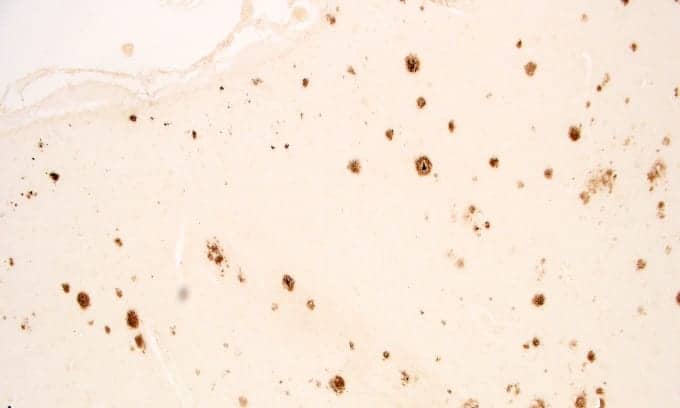Brain Damage Signs Identical in Sleep Apnea & Alzheimer’s Disease
While the cause of Alzheimer’s disease remains a mystery, amyloid plaques that are toxic to brain cells are known indicators of the disease.
New research shows these plaques start in the same place and spread in the same way in the brains of people with obstructive sleep apnea (OSA), as in those with Alzheimer’s.
The clinical study by Australian and Icelandic researchers, led by RMIT University, is published in the journal Sleep.
Lead investigator Professor Stephen Robinson, PhD, a professor at RMIT, says scientists have known the two diseases are related, but what drives the connection is still unclear.
“We know that if you have sleep apnea in mid-life, you’re more likely to develop Alzheimer’s when you’re older, and if you have Alzheimer’s you are more likely to have sleep apnea than other people your age,” he says in a release.
“The connection is there but untangling the causes and biological mechanisms remains a huge challenge.
“Our study is the first to find Alzheimer’s-like amyloid plaques in the brains of people with clinically-verified obstructive sleep apnea.
“It’s an important advance in our understanding of the links between these conditions and opens up new directions for researchers striving to develop therapies for treating, and hopefully preventing, Alzheimer’s disease.”
Significantly, the severity of sleep apnea was linked with a corresponding build-up of amyloid plaques.
The study also found that treatment with CPAP made no difference to the amount of plaques found in the brain.
[RELATED: Is Risk of Alzheimer’s Linked to Specific Sleep Patterns?]
Brain Damage Connection
The new study investigated the extent of Alzheimer’s-like indicators in autopsy tissue from the hippocampus of 34 people and the brainstems of 24 people with OSA.
The researchers looked for both amyloid plaques and neurofibrillary tangles, another known indicator of Alzheimer’s disease.
The hippocampus is the part of the brain associated with memory.
In Alzheimer’s disease, plaques and tangles first appear in a nearby cortical area and then move into the hippocampus, before spreading to the rest of the cortex.

While the study found both plaques and tangles in the brains of people with sleep apnea, the plaques showed a stronger association with severe sleep apnea.
“In cases of mild sleep apnea, we could only find plaques and tangles in the cortical area near the hippocampus, precisely where they are first found in Alzheimer’s disease,” says Robinson, a researcher in RMIT’s School of Health and Biomedical Sciences and Austin Health’s Institute for Breathing and Sleep (IBAS).
The subjects of the research showed no clinical symptoms of dementia before they died, suggesting they may have been in an early pre-dementia stage.
“While some people may have had mild cognitive impairment or undiagnosed dementia, none had symptoms that were strong enough for an official diagnosis, even though some had a density of plaques and tangles that were sufficiently high to qualify as Alzheimer’s disease,” Robinson says.
[RELATED: Why Are Some Patients Treated for Obstructive Sleep Apnea Still Sleepy?]
“The next stage for our research will be to continue analysing these samples to get a full understanding of the neuropathology, including signs of inflammation and changes to the blood vessels that supply nutrients to the brain.
“The sample size for this study was limited, so we would also like to work towards establishing a clinical study with a larger cohort.”
The researchers acknowledge the support from the Landspitali Biobank, Iceland.
Illustration 127857231 © Sebastian Kaulitzki – Dreamstime.com
from Sleep Review https://ift.tt/3n2b3sh


Post a Comment